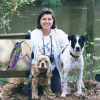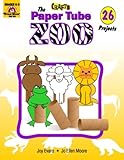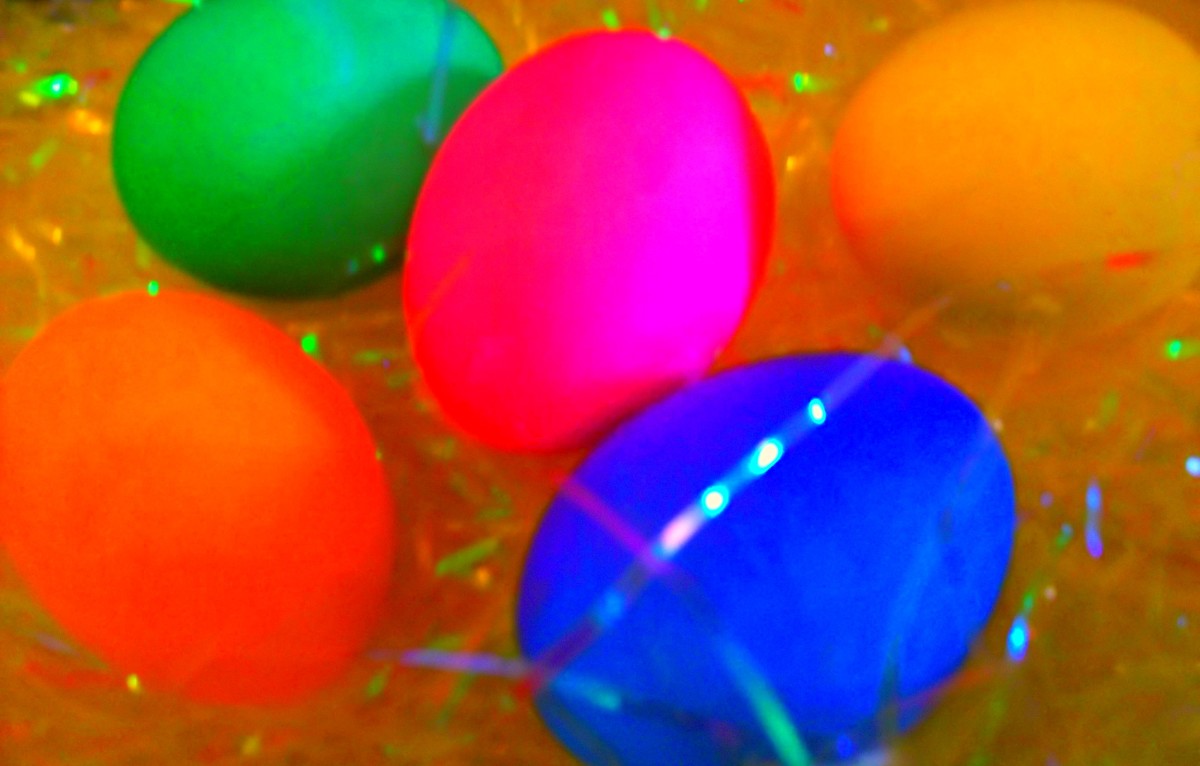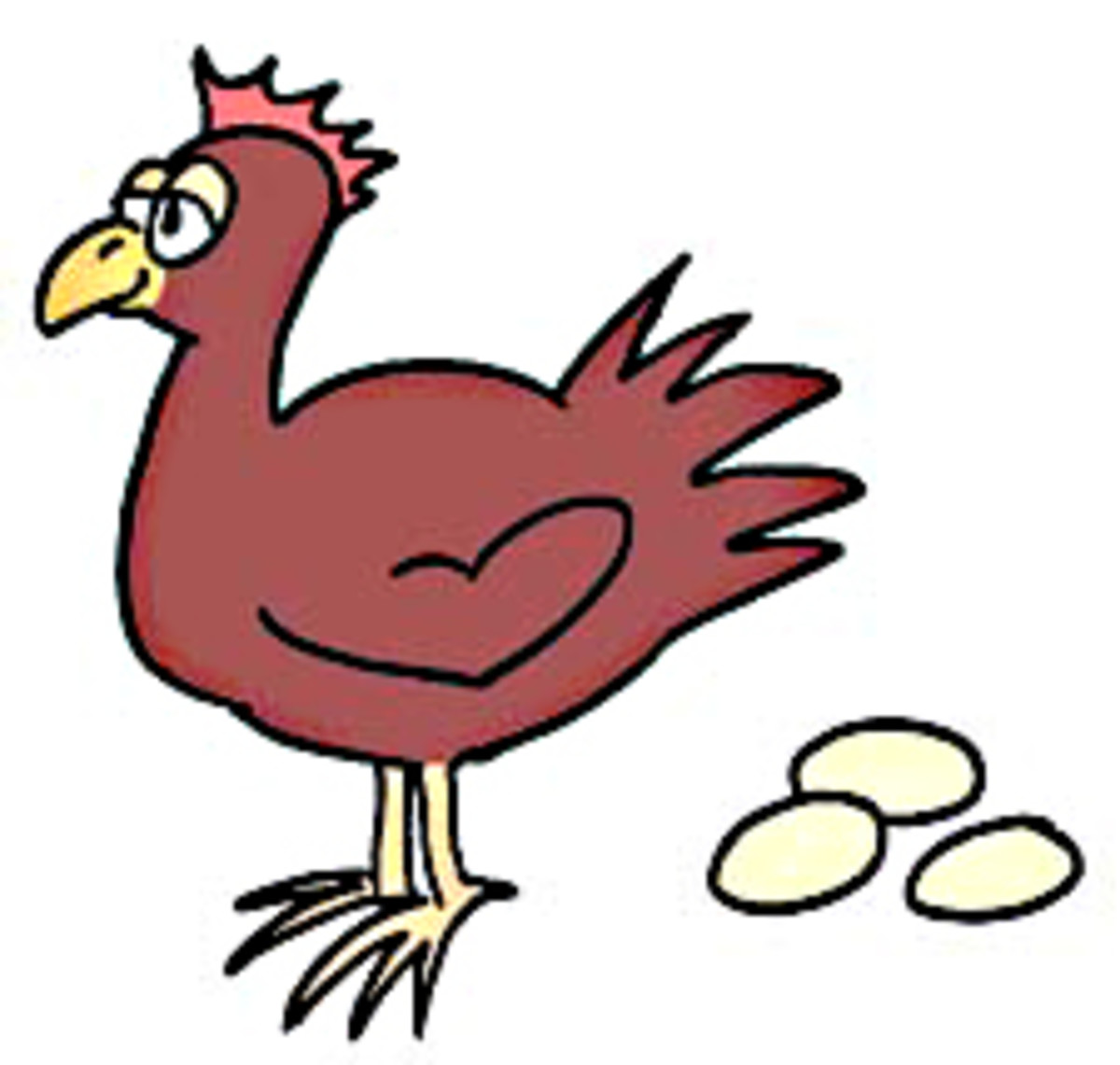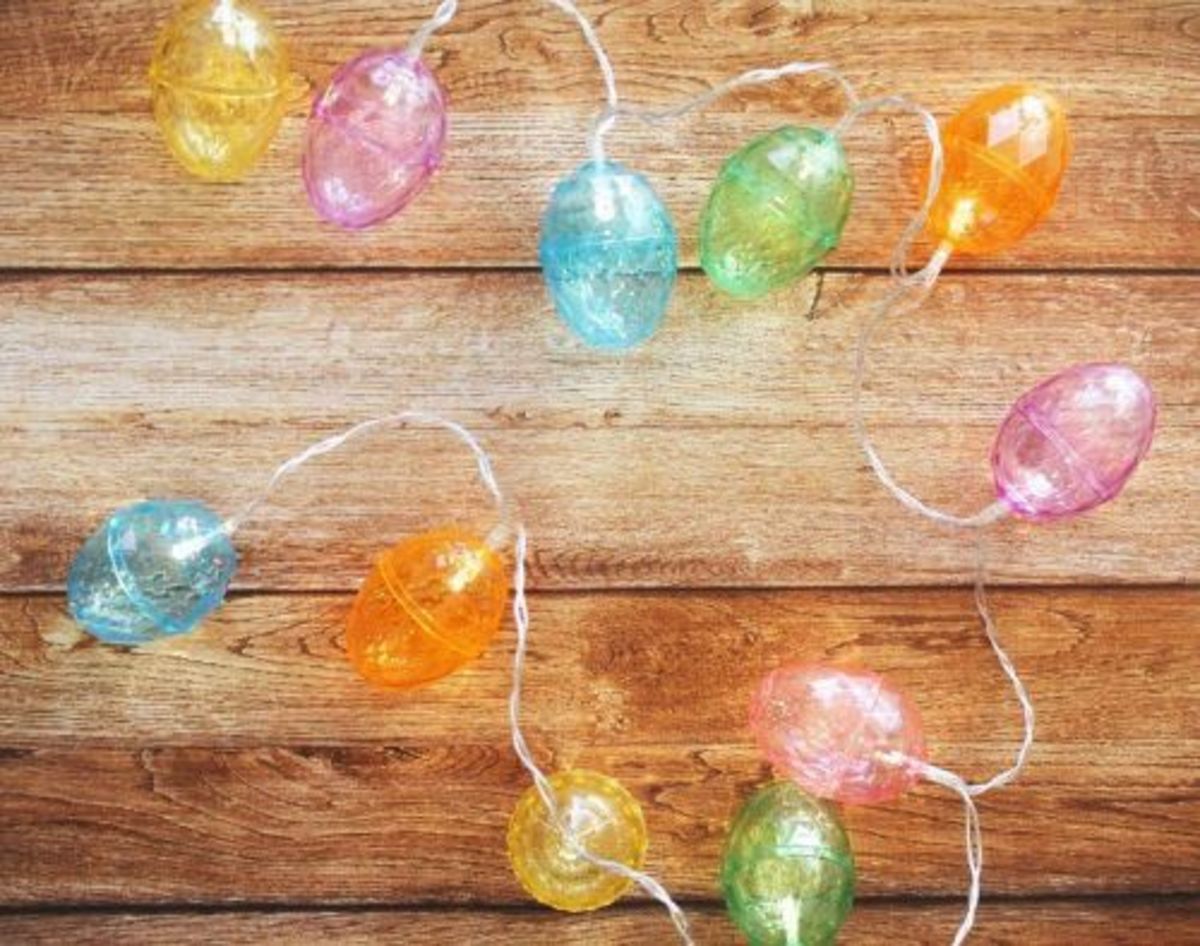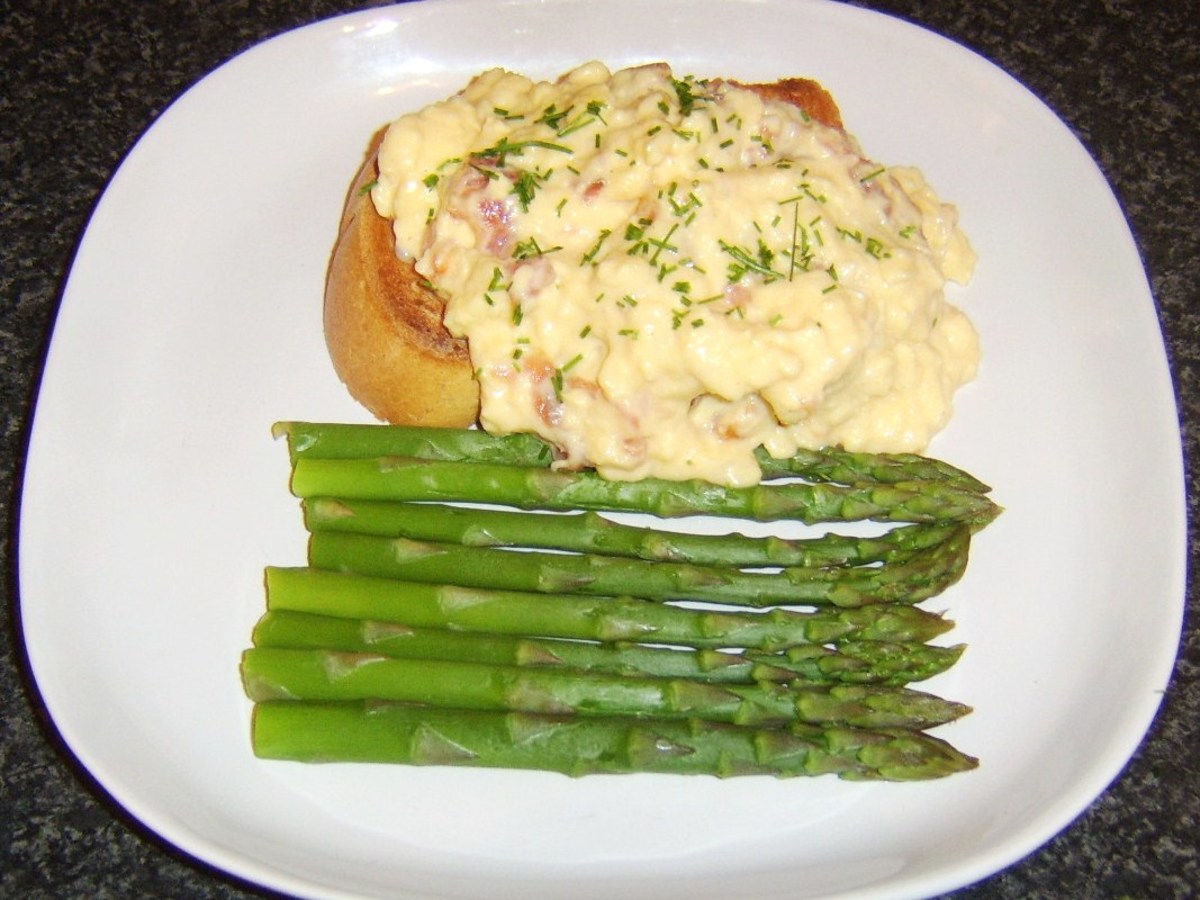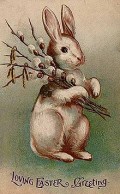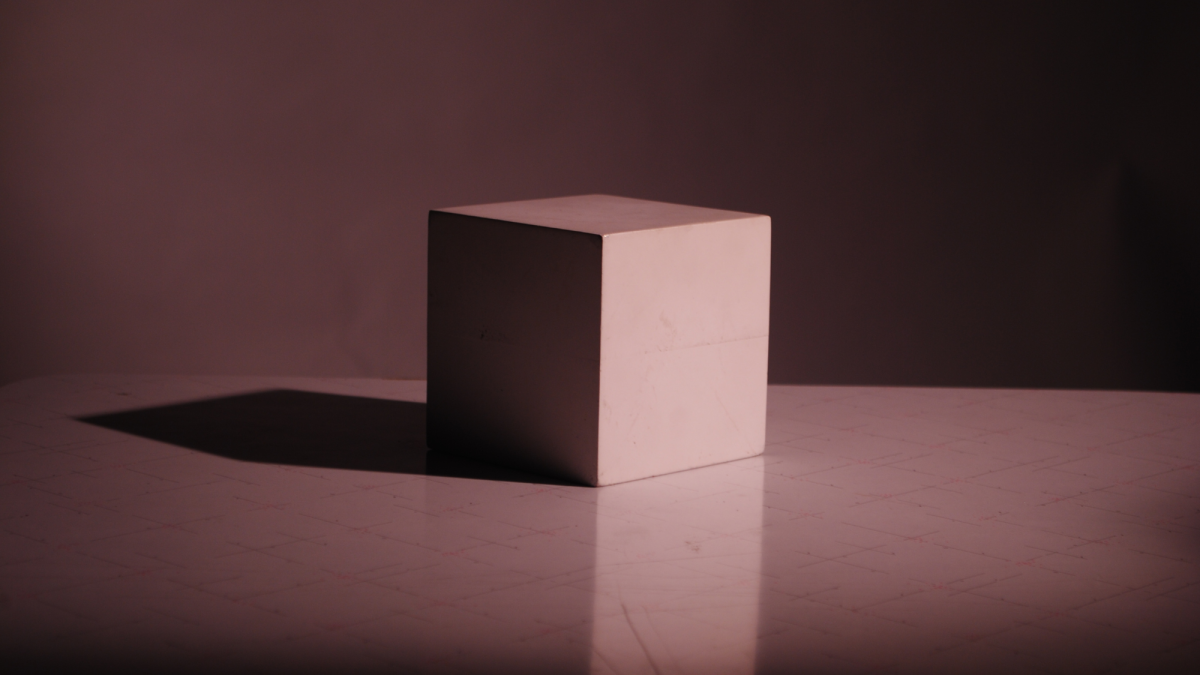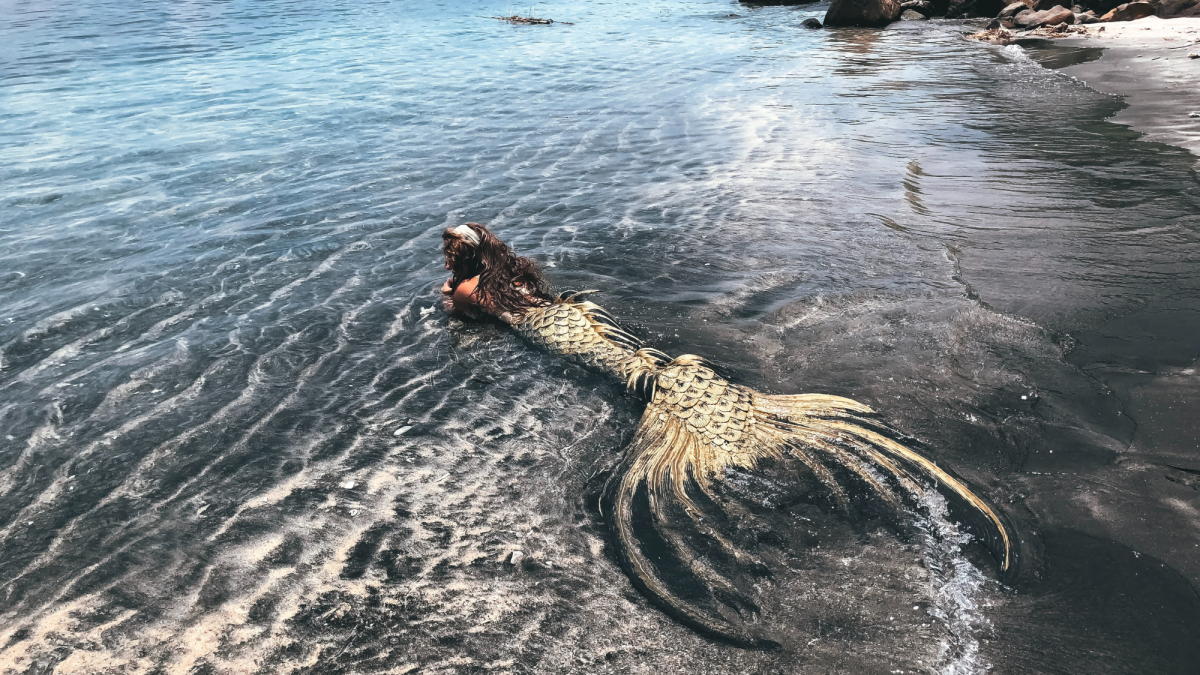Eggs and Easter Teaching Unit
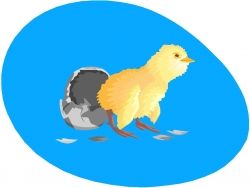
Eggs Thematic Unit and Other Easter Ideas
Easter and eggs are lots of fun, but they also present many learning opportunities for children. I have written a fourth grade, inter-disciplinary thematic teaching unit on Eggs which includes many hands-on activities as well as bibliographies of books and audio-visual materials. Subjects covered include: Language Arts, Math, Science, Social Studies, Library Information and Research Skills and Arts and Crafts.
The activities are designed for small groups so they can be adapted to a classroom or a home schooling setting. Easter craft ideas for children and adults as well as poems, songs, riddles and some recipes are also included.
Center Activities for Eggs Thematic Unit
Eggs - Center 1 Observation and Note Taking
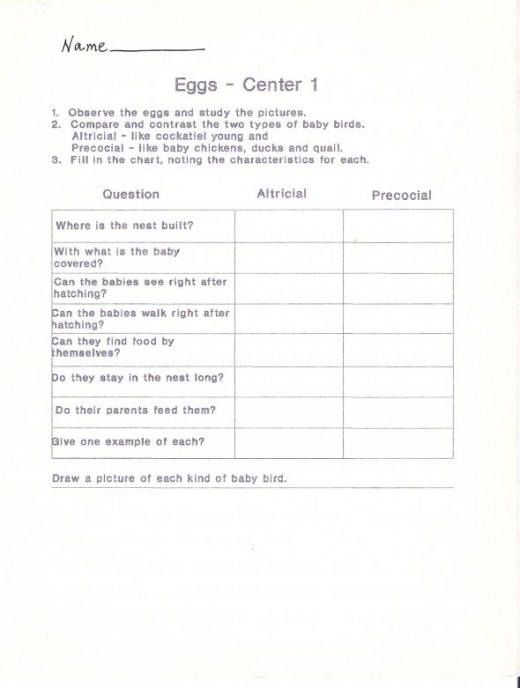
Hen and Baby Chicks
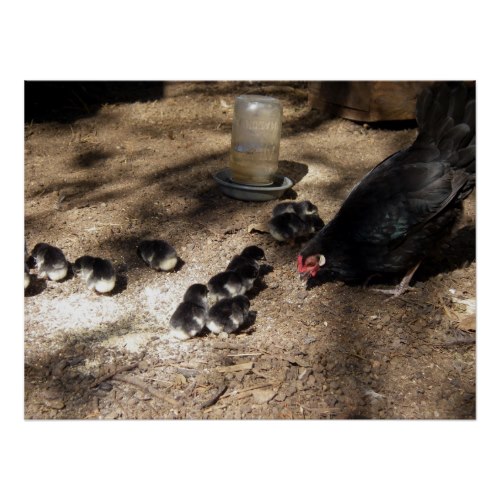
Display cockatiel (or another altrical bird)* eggs in a nesting box and brown chicken eggs. Also display pictures of cockatiels (or other altricial young) and chicken, ducks and quail (precocial young) with explanations of each. A work sheet will be in the form of a chart, in which the children observe then note (compare/contrast) the characteristics of both altricial and precocial young.
*Contact local bird breeders or the state Bluebird Society to get real nests and eggs. You must have a special permit to possess and transport bluebird (or any other indigenous bird's) eggs or nests, but some members of local bluebird societies that give presentations have a permit and would be happy to display a bluebird nest box with nest and eggs.
Chart for Center 1 - Observation
Altricial
Birds like cockatiels hatch babies that are helpless.
The babies have no feathers or fuzz, their eyes are closed, and their parents must feed them constantly.
Cockatiels stay in the nest box for about 30 days.
Even though they are fully feathered, their parents continue to feed them. They are not weaned until they are about 45 days old. Then they can crack seed and eat on their own.
In the wild, cockatiels lay their eggs in hollow trees. Most altricial parents make their nests in trees or bushes where their helpless young can be safe.
Precocial
Birds like chickens, ducks and quail have young that can run around soon after they are hatched. They can catch much of their own food by themselves.
Most parents of precocial babies build nests on the ground.
Precocial babies leave the nest after a few hours.
Their parents keep them warm, but do not feed them.
They set off on their own soon after they grow real feathers which is usually in about 6 weeks to 8 weeks.
The students will use the chart above to record their observations. Click on it for a full size view.
Mother Dove and Young
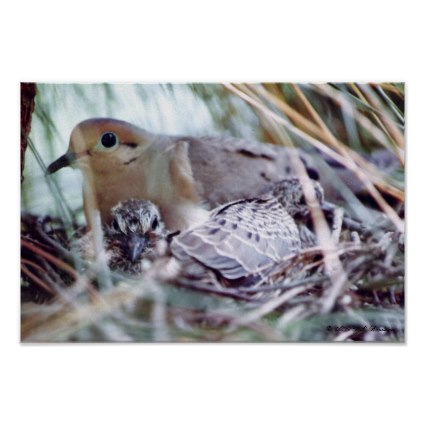
Chicks Hatching Vid
Tillie Lays an Egg
Baby Robins Hatching
Eggs
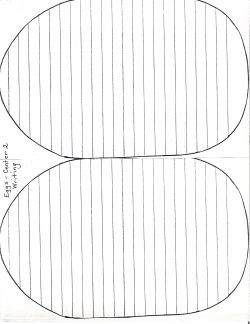
Center 2 - Creative Writing
Using egg shaped paper, which will fit into their Pysanky (Batik style) paper eggs, the children will write riddles and poems about eggs. Either fiction or non-fiction will be acceptable. Examples of poems from Mother Goose and The Hobbit will be displayed. Roget's Thesaurus and dictionaries will be available.
Riddles
Riddles in the Dark from The Hobbit by J.R.R. Tolkien
A box without hinges, key, or lid,
Yet golden treasure inside is hid.
A Mother Goose Riddle:
In marble walls as white as milk,
Lined with skin as soft as silk;
Within a fountain crystal clear
A golden apple doth appear.
No doors there are to this stronghold--
Yet thieves break in and steal the gold.
Write your own riddle or poem about eggs. Use the thesaurus and dictionary to find rhyming words. Write the poem in your egg booklet using the egg shaped lined paper.
Lined Egg Shape
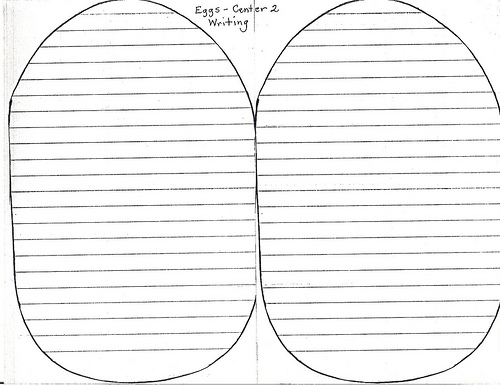
Click on the egg shaped lined paper to get a full size view that can be printed.
Chickens Aren't the Only Ones
Center 3 - Note Taking
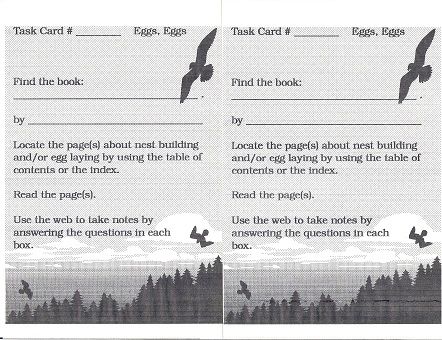
The students will follow the instructions on a task card to select a trade book. Click on the Task Card above to visit Flickr where you can print out the page.
Or click here to go to the image on Flickr.
Then, using a "web" form for taking notes and the trade books from the 500's section, the children will pick a book featuring an egg laying animal. The children will skim for the information to answer the questions about egg layers detailed on the web.
Click here to go to the Web Form on Flickr. You can print our a full size version of the page.
Center 4 - Art
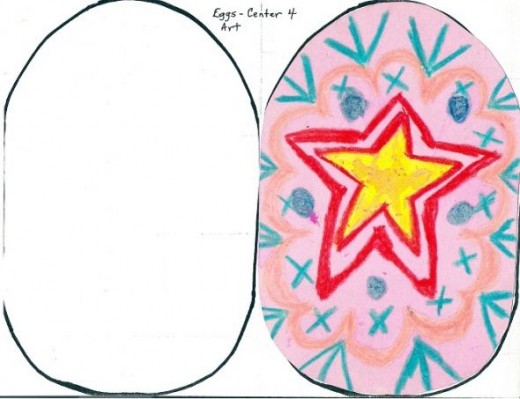
The children will use an old Ukrainian technique called "pysanky" which is featured in the book, The Egg Tree, a Caldecott winner by Katherine Milhous, to design the cover of their "EGG BOOKS". The teachers will read the book prior to coming to the library. A short article with pictures showing the Ukrainian art form will be displayed at the center. Materials needed: crayons, watercolor wash, scissors, paper.
Student Instructions:
Decorate the cover of your egg booklet by making a design in crayon like the ones in the EGG BOOK and like those which the people of the Ukraine are famous for. Each village makes its own design. The designs include fir trees, priests' robes, bell towers and chapels.
Color very hard, but leave some white spaces. When you've finished your design, use the watercolor wash to cover the entire egg design. You will add pages at another center. When it is dry, cut out the egg.
You can also click here to go to Flickr to print the cover page.
The Egg Tree - Caldecott Winner
How to Paint Ukrainian Easter Eggs.
The Talking Eggs
Center 5 - Listening and Viewing
A listening center will feature a book and tape: Jessie the Chicken by Margaret S. Pursell. Other good books or videos are Reading Rainbow's Rechenka's Eggs or Chickens Aren't the Only Ones. A comprehension worksheet can be prepared by the teacher for the specific book.
Rechenka's Eggs.
Egg Videos on Amazon
These videos about eggs will help the students who are visual learners.
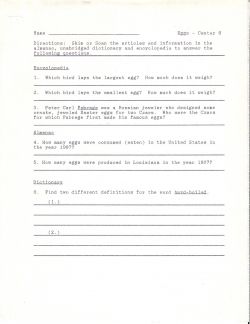
Center 6 - Research
Research questions (most are social studies related) will require the children to use the encyclopedia, almanac and unabridged dictionary.
The worksheet on the right can be used, or questions geared toward your specific unit of study can be formulated.
Eggs Thematic Unit - More Activities and Information
Eggs Thematic Unit - Objectives
GOAL/PURPOSE
The study of eggs will be undertaken because:
... the students can learn about the life cycle 4 different types of animals.
... the students can become aware of different cultures and generations Easter customs.
Time Frame/Level: This unit is designed for fourth grade students and should last about 4 weeks.
OBJECTIVES
Science
The student:
... will identify the 4 main classes of egg-laying animals.
... will explain the life cycles of birds.
... will identify the characteristics of birds.
... will identify different types of birds and their habitats.
Social Studies
The student:
... identifies the history and customs of other cultures (Louisiana Creoles and old Russia).
... identifies the lifestyle (homes, food, clothes, etc) of the early rural Louisianans and old Russians.
Language Arts
The student:
... will write a paragraph using the correct punctuation and format.
... appreciate literature from other cultures and generations.
... compare and contrast different format of the same story.
... compare and contrast different versions of the Cinderella story.
Math
The student:
... will weigh and measure
... multiply by 12.
... solve word problems.
Library/Information Skills
The student:
... learns to use guide words as aids in locating specific words.
... learns to use entry words.
... learns to use a junior thesaurus as a source of synonyms.
... learns to paraphrase information or take point form notes on a given subtopic, using one source.
... learns to use a variety of reference books as sources of information.
... learns to interpret information in graphs/chart/diagrams.
... uses headings and sub headings to skim articles
... identifies other reference materials besides encyclopedias.
... reads for information.
... recognizes and appreciates various types of literature.
Mother Duck With Ducklings
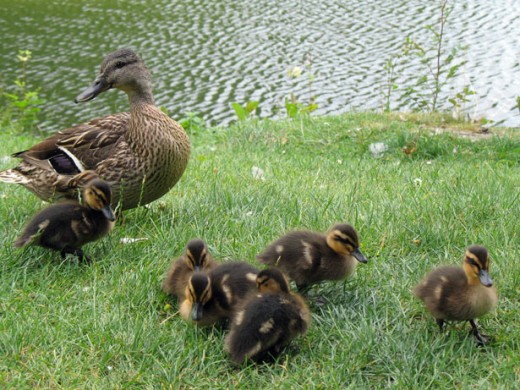
Activities
ACTIVITIES
Language Arts
1. After reading The Talking Eggs, the students can pretend to throw an egg over their left shoulder. They then can write a story describing the gift that would spill out and how that gift would change their lives.
2. The students can also write about choices that they made (wise or unwise) and the consequences of those choices.
3. After reading the Egg Tree and Rechenka's Eggs, the students can compare and contrast the two stories by filling out a web.
Science
1. After viewing the "Reading Rainbow" episode featuring Chickens Aren't the Only Ones, the class can be divided into small interest groups. These groups can visit the library and research reptiles, birds, insects and amphibians.
2. A science demonstration can be performed using a small mouthed gallon jug, matches and a hard boiled egg. The matches are lit and dropped into the jug, when they burn out, the peeled egg is quickly placed on the mouth of the jug. As the air cools and contracts, a vacuum is created and the egg will be sucked into the jug.
3. The class can observe birds nests and insect eggs on a nature walk, or an aviculturalist can be invited to bring some of his/her birds and give a talk. (In Baton Rouge, LA, Tim Schecksneider or someone from the Capital Area Avicultural Society; in other places, the state Bluebird Society or local bird breeders can be contacted).
Math
1. The students can weigh different kinds of eggs (raw cockatiel, chicken, duck and hard-boiled chicken). Then they can chart the results.
2. Word problems using the 12's multiplication tables and eggs can be formulated by individual students. The problems can be compiled into a class worksheet by the teacher.
Social Studies
1. Task cards can be designed to guide the students in note-taking, using sub-topics. Web forms with corresponding Roman Numerals can be used by the students to record the information in point form. Topics to research can include: the Russian Czars, Fabrege Eggs, Fabrege, Louisiana Creoles, Rural Louisiana, Old Russia (Ukraine), and the Pysanky Technique.
2. Small groups can compare/contrast Easter Customs in America and Russia.
3. A small group can conduct a survey of students and teachers as to how they like their eggs cooked. Results can be charted in math.
Art
1. After studying the technique of Pysanky, the students can blow eggs and decorate them using the technique.
2. After reading The Talking Eggs, the children can use Elmers glue, mixed with food coloring to make jeweled eggs. An egg shape is drawn on plastic with a marker, then outlined and filled in with the colored glue. After it has dried some, glitter, sequins and beads can be sprinkled in the glue. When it's completely dry, the egg is peeled off and can be strung on ribbon and worn as a medallion.
3. "Talking Eggs" can be created by knocking the small end of a raw egg off, emptying the contents. The students can decorate the eggs and place small notes with messages or poems on them inside the eggs. The hole on the end is covered with tissue paper and the "talking eggs" can be exchanged.
Music
The music teacher can introduce various kinds of music, including Cajun music, Russian music, the Virginia Reel and other square dance music.
PE
The PE teacher can teach the children the Virginia Reel, the cake walk and other square dances.
LIBRARY/INFORMATION
Center 1
Display cockatiel eggs in a nesting box and brown chicken eggs. Also display pictures of cockatiels (altricial young) and ducks and quail (precocial young) with explanations of each. A work sheet will be in the form of a chart, in which the children observe then note (compare/contrast) the characteristics of both altricial and precocial young.
Center 2
Using egg shaped paper, which will fit into their Pysanky (Batik style) paper eggs, the children will write stories and poems about eggs. Either fiction or non-fiction will be acceptable. Examples of poems from Mother Goose and The Hobbit will be displayed. Roget's Thesaurus and dictionaries will be available.
Center 3
Using a "web" form for taking notes and the trade books from the 500's section the children will pick a book (from a group of preselected ones) featuring an egg laying animal. The children will skim for information to answer the questions about egg layers detailed on the web.
Center 4
The children will use an old Ukrainian technique called "pysanky" which is featured in the book, The Egg Tree, a Caledcott winner by Katherine Milhous, to design the cover of their "EGG BOOKS". The teachers will read the book prior to coming to the library. A short article with pictures showing the Ukrainian art form will be displayed at the center. Materials needed: crayons, watercolor wash, scissors, paper.
Center 5
A listening center will feature a book and tape Jessie the Chicken by Margaret S. Pursell with comprehension questions.
Center 6
Research questions (most are social studies related) will require the children to use the encyclopedia, almanac and unabridged dictionary.
Baby Carolina Wrens Begging for Food
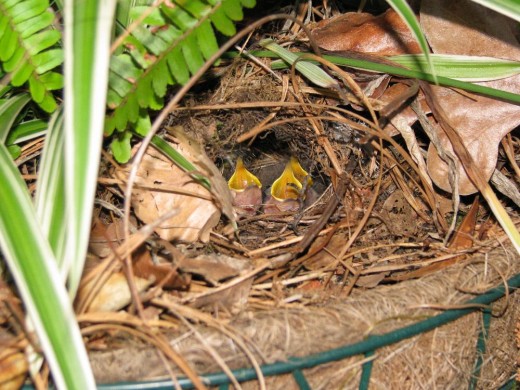
Bibliographies
MULTIMEDIA BIBLIOGRAPHY
FICTION
Adams, Adrienne. The Easter Egg Artists. Scribner, 1976. ($13.95, 0684146525) gr. K-3
Aliki. The Eggs. Pantheon, 1969. (o.p.) gr. 2-6
Butterworth, Oliver. The Enormous Egg. Dell, 1987. ($14.95, 0316119040) gr. 3-5
Carrick, Carol. The Crocodiles Still Wait. Houghton, 1980. ($14.95, 039529102X) gr. 1-4
Coerr, Eleanor. Josefina story Quilt. Harper, 1986. ($12.89, 0060213493) gr. 1-3
Czernecki, Stefan and Rhodes, Timothy. Nina's Treasures. Sterling, 1990. ($14.95, 0920534651) gr. 1-3
Dabcovich, Lydia. Mrs. Huggins and Her Hen Hannah. Dutton, 1985. ($12.95, 0525442030) gr. K-3
Edwards, Michelle. Chicken Man. Lothrop, 1991. ($13.95, 068897981) gr. 1-3
Friedrich, Otto and Friedrich, Priscilla. The Easter Rabbit That Overslept. Lothrop, 1983. ($11.95, 0688015409) gr. K-3
Ginsburg, Mirra. Good Morning, Chick. Morrow, 1980. ($12.93, 0688842844) gr. 1-3
Hayes, Sarah. The Bad Egg: The True Story of Humpty Dumpty. Little, 1987. ($12.95, 0316351849) gr. 2-4
Heine, Helme. The Most Wonderful Egg in the World. Macmillan, 1983. ($13.95, 068950280X) gr. K-2
Milhous, Katherine. The Egg Tree. Macmillan, 1981. ($12.95, 0684127164) gr. 2-4
Myers, Bernice. The Millionth Egg. Lothrop, 1991. ($13.95, 068809886X) gr. 1-3
Polacco, Patricia. Rechenka's Eggs. Putnam, 1988. ($13.95, 0399215018) gr. 2-5
Peet, Bill. The Pinkish, Purplish, Bluish Egg. Pantheon, 1970. ($13.95, 039518472X) gr. 1-4
San Souci, Robert. The Talking Eggs. Dial/Dutton, 1989. (0803706200, $13.89) K-5.
Stevenson, James. The Great Big Especially Beautiful Easter Egg. Greenwillow, 1983. ($13.95, 0688017894) gr. 2-4
Thiele, Colin. Rotten Egg Paterson to the Rescue. HarperCollins, 1991. ($12.95, 0060261048) gr. 2-5
Wilkes, Larry. The King's Egg Dance. Carolrhoda, 1990. ($12.95, 0876144466) gr. 1-3
Non-fiction
Arnold, Caroline. Saving the Peregrine Falcons. Carolrhoda, 1985. ($12.95, 0876142250) gr. 3-6
Back, Christine. Chicken and Egg. Silver Burdett, 1989. ($9.98, 0382092848) gr. 1-6
Barth, Edna. Lilies, Rabbits, and Painted Eggs: The Story of the Easter Symbols. Clarion, 1979. ($12.95, 0395288444) gr. 3-6.
Chaikin, Miriam. Ask Another Question: The Story and Meaning of Passover. Clarion, 1986. ($13.95, 0899192815) gr. 1-4.
Cole, Joanna. A Chick Hatches. Morrow, 1976. ($12.88, 0688320872) gr. 1-4
Coskey, Evelyn. Easter Eggs for Everyone. Abingdon Press, 1973. ($9.95, 0687114926) gr. 4 & up
Flanagan, Geraldine. Window Into an Egg: seeing Life Begin. Young Scott, 1969. gr. 1-3
Freschet, Berniece. Wood Duck baby. Putnam, 1983. gr. 2-4
Gans, Roma. It's Nesting Time. HarperCollins, 1964. ($12.89, 0690455445) gr. K-3
Heller, Ruth. Chickens Aren't the Only Ones. Putnam, 1981. ($8.95, 0448018721) gr. K-3
Johnson, Sylvia A. Inside an Egg. Lerner, 1982. ($12.95, 0822514729) gr. 2-6
Kennedy, Pamela. An Easter Celebration. Ideals, 1991. ($10.95, 0824985060) gr. 3-5
Lauber, Patricia. What's Hatching Out of That Egg?. Crown, 1987. ($4.95, 0517563495) gr. 2-4
McClung, R. M. The Amazing Egg. Dutton, 1980. ($12.95, 0525254805) gr. 4 & up
McNulty, Faith. Peeping in the Shell: A Whooping Crane Is Hatched. HarperCollins, 1986. ($11.95, 0060241349) gr. 3-5
Nerlove, Miriam. Passover. Albert Whitman, 1989. ($10.95, 0807563609) gr. 2-4
Parker, Nancy Winslow. Bugs. Greenwillow, 1987. ($12.93, 0688066240) gr. 1-5
Selsam, Millicent E. and Hunt, Joyce. First Look at Birds' Nests. Walker, . ($9.85, 0802765653) gr. 1-3
Watts, Barrie. Birds' Nest. Silver Burdett, 1989. ($9.98, 0382094395) gr. 1-5
Watts, Barrie. Ladybug. Silver Burdett, 1987. ($9.98, 0382094379) gr. 1-5
Poetry
Hoban, Russell. "Egg Thoughts." In Egg Thoughts and Other Frances Songs. Harper, 1972. ($12.89, 0060223324) gr. 1-3
Livingston, Myra Cohn. "Just Fancy." In A Song I Sang to You. Harcourt, 1984. gr. 2-5
Prelutsky, Jack, ed. The Random House Book of Poetry for Children. Random, 1983. ($17.99, 0394950100) gr. 1-5
Hoberman, Mary Ann. "Meg's Egg." and Maschler, Fay. "Little Bits of Soft Boiled Egg."
Silverstein, Shell. "I Won't Hatch." In Where the Sidewalk Ends. Harper, 1974. ($14.89, 0060256680) gr. 3-5
Audio-Visual
Reading Rainbow: Heller, Ruth. Chicken's Aren't the Only Ones. Video Tape
Kids Get Cooking: The Egg. 1987. Video Tape.
Psysanky: The Ukrainian Easter Egg. 1976. movie
San Souci, Robert D. The Talking Eggs. American School Publishers/McGraw-Hill, 1991. Video Tape
Bird Poster - Baby Hummingbirds
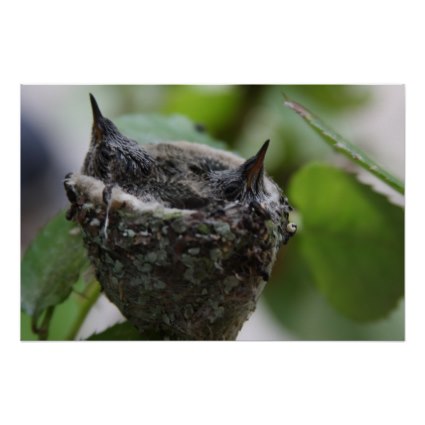
More About Nesting Birds
- Nest Box Trails for Bluebirds and Others
Lawrence Zeleny's book, "the Bluebird How You Can Help Its Fight for Survival", alerted the public about the peril of our native Bluebirds. Now people all over North America are building and maintaining Bluebird Trails. Anyone can s
The Golden Egg Book
An Easter Puzzle - Alice Du Bois
This morning, what do you suppose
I found beside my door?
A nest of colored Easter eggs-
Five or six or more.
I asked my own pet bunny,
Who seems to love me so,
To tell me where they came from;
I thought perhaps he'd know.
Yet not a single word he said,
Though twice he blinked his eyes;
But I believe he really knows
Because he looked so wise.
Country Bunny and the Little Gold Shoes
Easter Eggs by Winfred C. Marshall
Sing a song of Easter eggs-
Betsy counted eight,
Hidden in a grassy nook,
By the garden gate;
Two beneath the lilac bush,
Near the pansy bed;
Bob gave her a purple one;
She gave Bob a red;
Four beneath a wild rosebush,
Growing in the yard.
Let's help Betty count her eggs;
It will not be hard
Easter Basket Bunny Cake
1 package white cake mix
1 package devil food cake mix
1 cup shredded coconut
5 drops green food coloring (optional)
1 cup small jelly beans
15 marshmallows
Prepare and bake cake mix according to the directions on each package. After cake layers have cooled, frost (see recipe below) and place on cake plate, alternating chocolate and white layers. To create basket texture, repeatedly press end of small knife into soft frosting. Place coconut and food coloring in a jar and shake; arrange green colored coconut on top of cake to resemble an Easter basket. Fill basket with jelly beans. Decorate sides of cake with 12 marshmallow Easter bunnies. To make each "bunny", cut a marshmallow horizontally into two pieces. Put "sticky" part on side of cake using the smaller portion to form the head and the larger portion to form the body. Cut remaining three marshmallows into strips to form ears; stick in place. Eyes, mouth and nose can be made with food coloring or small pieces of black jelly beans.
Chocolate Cream Cheese Frosting
2 three-ounce packages block cream cheese
2 tablespoons milk
5 cups confectioner's sugar
Dash of salt
2 ounces unsweetened chocolate squares
1 teaspoon vanilla
Melt chocolate squares in double boiler. Place cream cheese in a mixing bowl and beat with the electric mixer until creamy and pliable (about 3 to 5 minutes). While continuing to beat, add milk, vanilla, melted chocolate, salt and sugar. Beat until thoroughly blended (about 2 minutes).
Reference: Famous Recipes from Homemaker's Holiday, Program No. 193, New Orleans Public Service
Easter Crafts
Paper Tube Zoo
This cute recyled paper tube rabbit and patterns for many other paper tube animals can be found in "The Paper Tube Zoo".
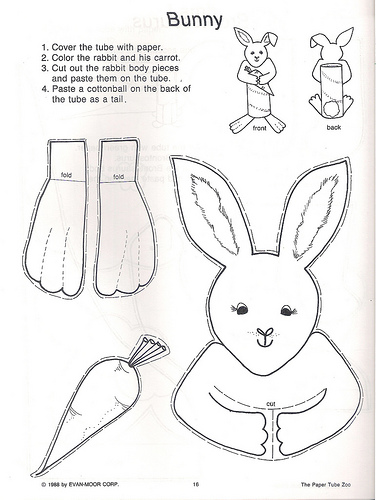
Folded Paper Projects
Students will learn to follow directions as they craft this origami bunny. You'll find 30 other projects in the Folded Paper Projects book.
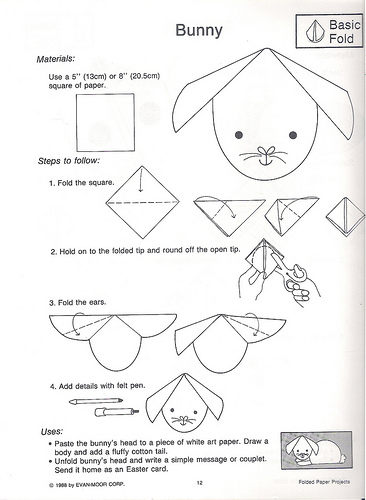
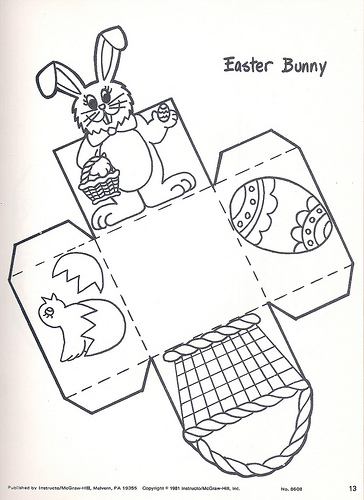
© 2009 Yvonne L B
